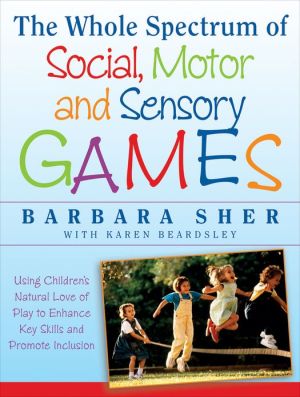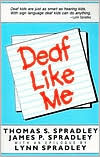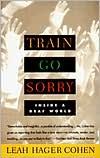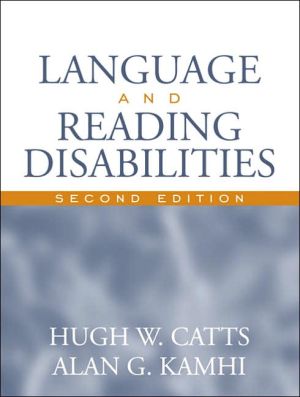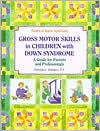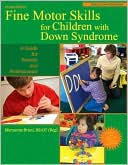Life Span Motor Development - 5th Edition w/Web Resource
Life Span Motor Development, Fifth Edition, is the only introductory textbook to use the model of constraints (or dynamical systems) approach in discussing reasons for changes in movement throughout the life span. This fully updated edition encourages students to observe and examine how the interactions of the individual, environment, and task affect changes in a person's movements. The principles of motor development are presented in a clear and accessible manner so that even readers with...
Search in google:
Life Span Motor Development, Fifth Edition, is the only introductory textbook to use the model of constraints approach in discussing reasons for changes in movement throughout the life span. This fully updated edition presents the principles of motor development in an accessible manner for readers with minimal movement science background. Doody Review Services Reviewer:Erik H. VanIterson, MS, MA(UIC College of Applied Health Sciences)Description:This book effectively integrates and applies the basic principles of motor control and human physiology to help explain how one's ability to control movement is affected across the course of the life span. Furthermore, it does a great job of sequentially reintroducing theories of motor control by providing sufficient real-world applications so readers may integrate the interactions of factors such as individual, environment, and task into the ability to affect motor development and learning. The previous edition was published in 2005.Purpose:The purpose is to reintroduce the fundamental concepts of motor control and apply them to the changes in movement control that occur during the course of one's life. In doing so, the authors start from a strong foundation of motor control and effectively explain the theories behind motor development and learning from youth to late adulthood. They meet their purpose over the course of several sections that are necessary to tie together the relationships between the individual and the internal and external interactions that occur during development/adulthood that affect movement.Audience:The audience may include students, educators, and practitioners in physical and occupational therapy, youth physical educators, and gerontologists. Features:The first of the book's six sections is primarily a review of the principles of motor control, with the remaining sections covering motor development ranging from youth to the elderly. There is a significant amount of information covered in each section without going into great detail on the theory behind it. Consequently, readers should have more than a beginning understanding of motor control before using this book. Illustrations, side notes, and figures add a simplistic but effective learning component to each chapter without overwhelming readers.Assessment:This book is especially useful for those who are interested in applying their knowledge of motor control and development to a real world setting. The updated references add value by illustrating the continuing growth and application of research being done in this area. This is a needed update of the previous edition, based on the updated references as well as on the return of the chapter on principles of motion and stability, which was omitted in an earlier edition.
Part I Introduction to Motor DevelopmentChapter 1. Fundamental ConceptsChapter 2. Theoretical Perspectives in Motor Development Part II Development of Motor Skills Across the Life SpanChapter 3. Physical Growth, Maturation, and AgingChapter 4. Development and Aging of Body SystemsPart III Motor DevelopmentChapter 5. Early Motor DevelopmentChapter 6. Development of Human LocomotionChapter 7. Development of Ballistic SkillsChapter 8. Development of Manipulative Skills Part IV Perceptual-Motor DevelopmentChapter 9. Sensory-Perceptual DevelopmentChapter 10. Perception and Action in Development Part V Functional Constraints to Motor DevelopmentChapter 11. Social and Cultural Constraints in Motor DevelopmentChapter 12. Psychosocial Constraints in Motor DevelopmentChapter 13. Knowledge As a Functional Constraint in Motor DevelopmentPart VI Interaction of Exercise and Structural ConstraintsChapter 14. Development of Cardiorespiratory EnduranceChapter 15. Development of Strength and FlexibilityChapter 16. Development of Body CompositionChapter 17. Conclusion: Interactions Among ConstraintsAppendix A Skinfold ChartsAppendix B Body Mass Index ChartsAppendix C Head Circumference Charts
\ From The CriticsReviewer: Erik H VanIterson, M.S., M.Bio(University of Minnesota School of Kinesiology)\ Description: This book effectively integrates and applies the basic principles of motor control and human physiology to help explain how one's ability to control movement is affected across the course of the life span. Furthermore, it does a great job of sequentially reintroducing theories of motor control by providing sufficient real-world applications so readers may integrate the interactions of factors such as individual, environment, and task into the ability to affect motor development and learning. The previous edition was published in 2005.\ Purpose: The purpose is to reintroduce the fundamental concepts of motor control and apply them to the changes in movement control that occur during the course of one's life. In doing so, the authors start from a strong foundation of motor control and effectively explain the theories behind motor development and learning from youth to late adulthood. They meet their purpose over the course of several sections that are necessary to tie together the relationships between the individual and the internal and external interactions that occur during development/adulthood that affect movement.\ Audience: The audience may include students, educators, and practitioners in physical and occupational therapy, youth physical educators, and gerontologists. \ Features: The first of the book's six sections is primarily a review of the principles of motor control, with the remaining sections covering motor development ranging from youth to the elderly. There is a significant amount of information covered in each section without going into great detail on the theory behind it. Consequently, readers should have more than a beginning understanding of motor control before using this book. Illustrations, side notes, and figures add a simplistic but effective learning component to each chapter without overwhelming readers.\ Assessment: This book is especially useful for those who are interested in applying their knowledge of motor control and development to a real world setting. The updated references add value by illustrating the continuing growth and application of research being done in this area. This is a needed update of the previous edition, based on the updated references as well as on the return of the chapter on principles of motion and stability, which was omitted in an earlier edition.\ \ \ \ \ BooknewsRevised and updated edition (first was 1986) of an undergraduate motor development text presenting comprehensive information on the principles, research, and applied practice of motor development throughout the life span. Annotation c. Book News, Inc., Portland, OR (booknews.com)\ \

